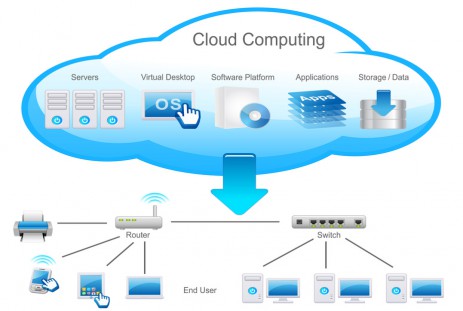cloud computing
what is It?
Cloud computing delivers hosted services over the internet. It also focuses on maximizing the effectiveness of the shared resources. With cloud computing, multiple users can access a single server to retrieve and update their data without purchasing licenses for different applications, which will reduce the environmental damage since less power, air conditioning, money, etc., are required. In cloud computing, the word “cloud“ is used as a metaphor for the “internet,“ so the phrase cloud computing means "a type of Internet-based computing," where different services — such as servers, storage and applications — are delivered to an organization's computers and devices through the Internet.

Log in to a portal and order your services through Cloud service customer. The cloud provider will validate, through the BSS(Business System Services), your request and if the validation is okay, it will provide the request through the OSS(Operating System Services.) You will receive the access to your requested services.
More Scalable
More Secure
More Reliable
How does it work?
Three Types of Cloud Computing
Software-as-a-Service (SaaS)
Platform-as-a-Service (PaaS)
Infrastructure-as-a-Service (IaaS)
SaaS is a distribution model that delivers software applications over the internet. SaaS offers productivity software and email services for customers, and users can access to SaaS applications and services from any location using a computer or other mobile device.
Users can access to the development tools that the providers host on their infrastructures over the internet. PaaS is used for general software development and many PaaS providers will host the software after it is developed. Common PaaS providers include Amazon Elastic Beanstalk, Google App Engine, and Salesforce.com's Force.com.
Haas provides different sizes and memory- or compute-optimized instances, in addition to customized instances, for various workload needs. Common IaaS providers include Amazon EC2, Joyent, VMware, Rackspace, and Google Cloud Storage.